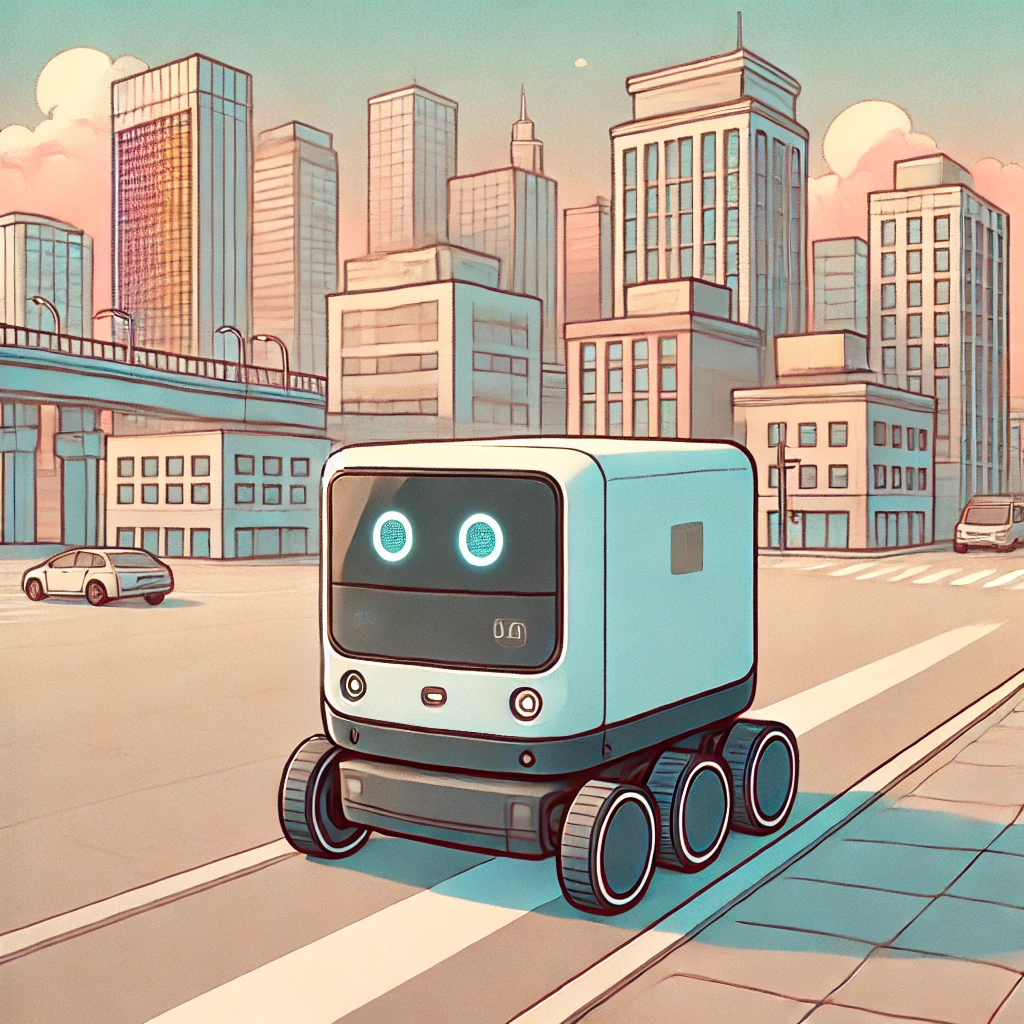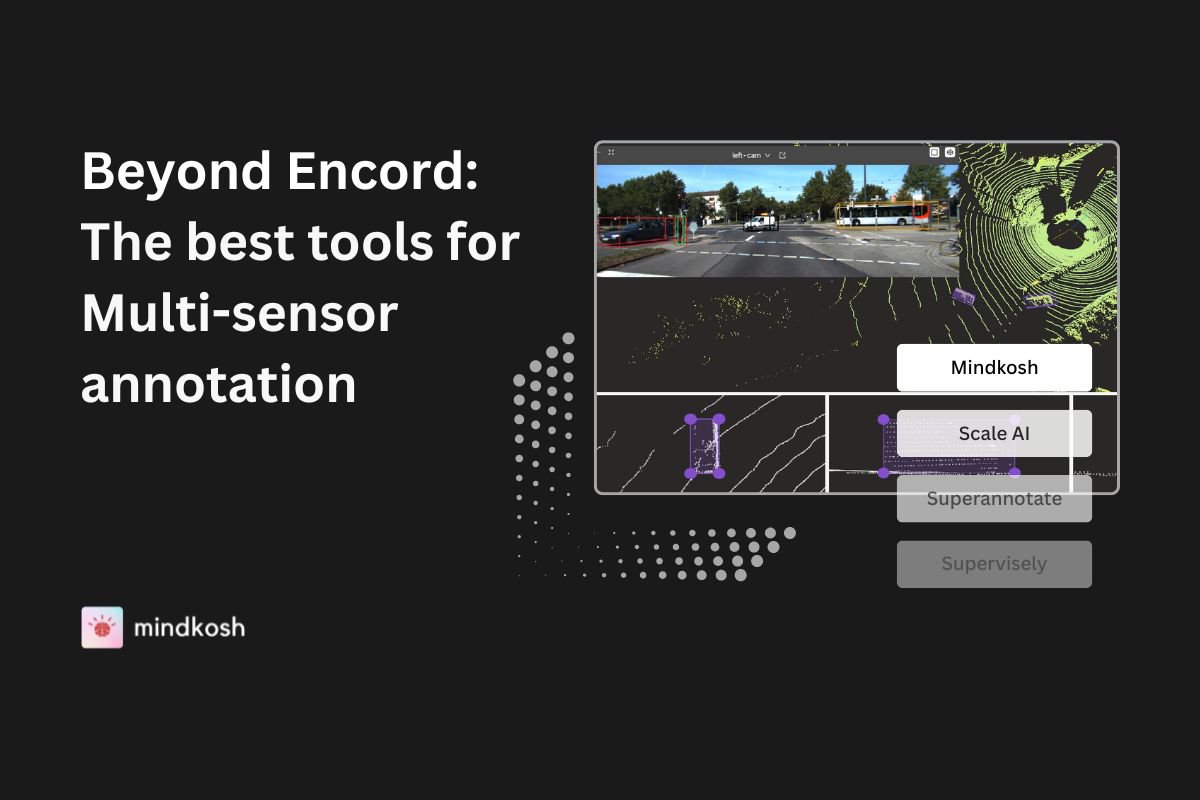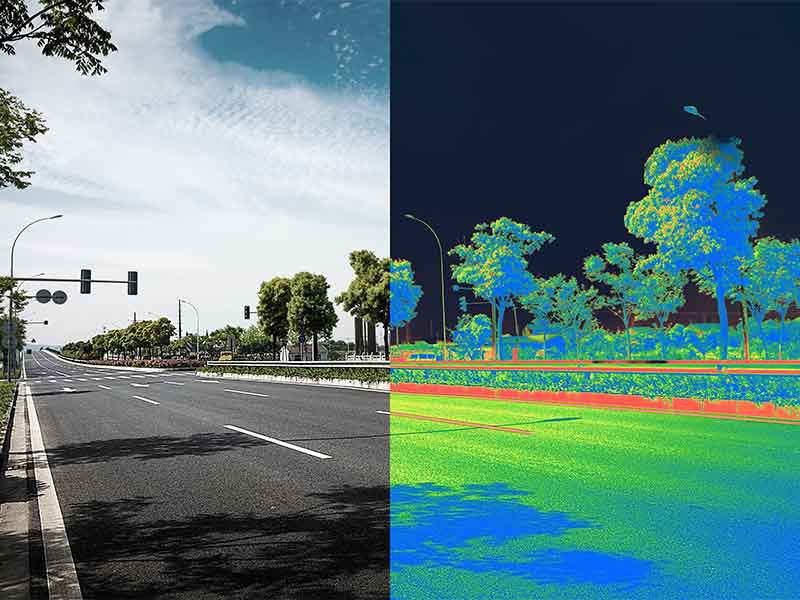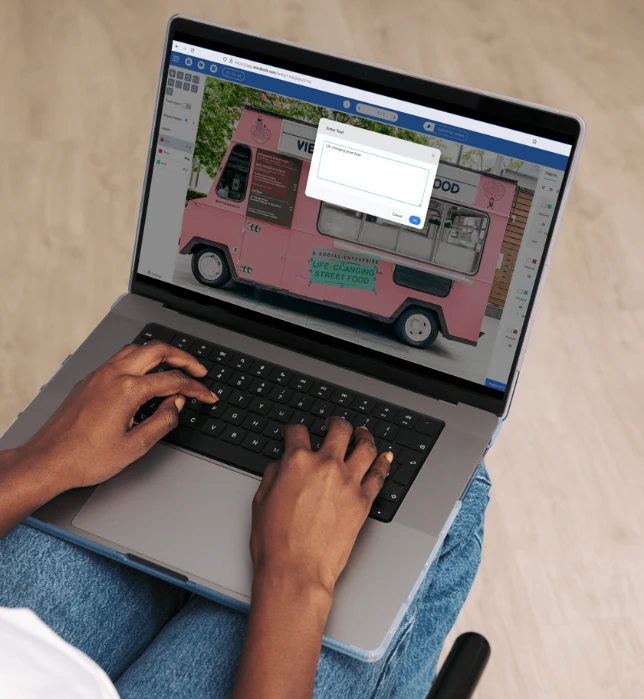SuperAnnotate is a powerful data annotation tool, especially for 2D image and video labeling. It emphasizes on collaboration, project management, and basic automation support — making it a go-to choice for teams with high-volume 2D workflows.
What makes SuperAnnotate stand out?
- Strong project management and collaboration tools
- Pre-annotation and model-assisted labelling for faster throughput
- Support for image, video and text.
- Python SDK for workflow customization
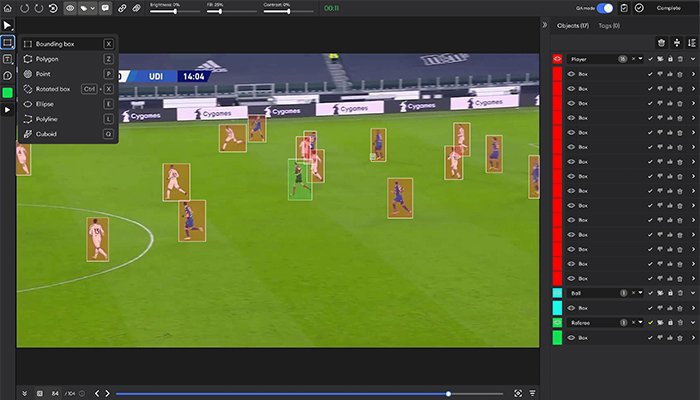
Why teams look beyond SuperAnnotate
SuperAnnotate shines for 2D workflows, team collaboration, and quick turnarounds. But projects that require native point-cloud segmentation, multi-camera context or powerful QA pipelines often run into friction. If these requirements sound resonate with you and are necessary for your labeled datasets, you might want to consider one of the platforms below.
You can read more about the growing demand for LiDAR annotation for autonomous vehicles and why 2D-only tools fall short.
Limitations:
- No support for LiDAR/sensor-fusion capabilities
- Limited automation tools for autonomy use cases.
- No native support for single channel
- No support for adding additional contextual images.
So, while SuperAnnotate is excellent for simpler 2D projects, teams working on autonomous driving, robotics and industrial automation use-cases often require native LiDAR and other sensor annotation tooling, sensor fusion, or more powerful automation.
If you’re in that camp, here are 5 alternatives worth considering.
Quick peak
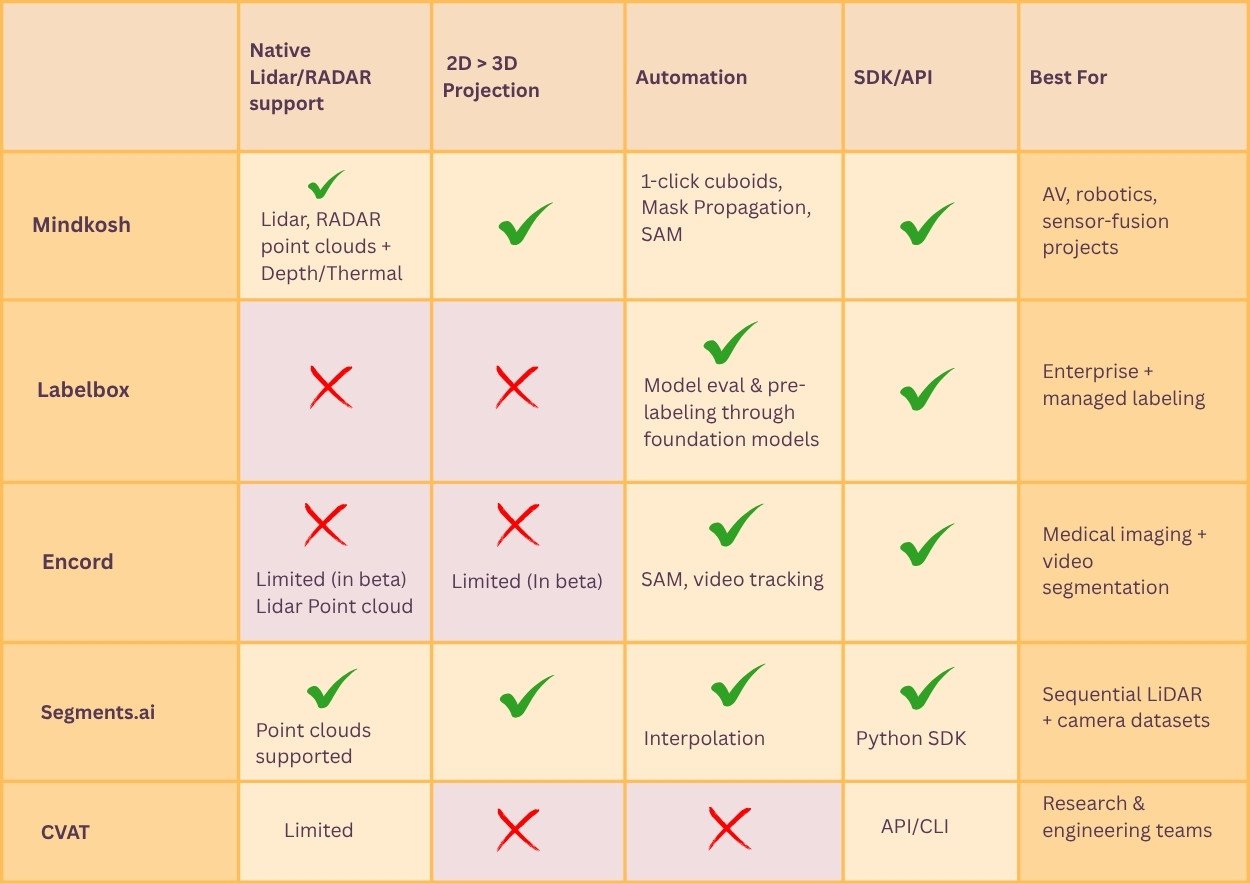
- Mindkosh – Best for native multi-sensor fusion (LiDAR + multi-camera) and complex workflows with high QA requirements.
- Labelbox – Powerful, robust annotation platform for 2D images and videos with support for foundational models.
- Encord – Best for collaborative workflows in medical imaging and video segmentation, with strong ontology customization and automation.
- Segments.ai – 3D-first platform built for sequential LiDAR + camera workflows and active-learning loops.
- CVAT – Best open-source option for teams that can invest engineering time to extend and self-host.
Mindkosh – Purpose-built for Sensor Fusion & LiDAR
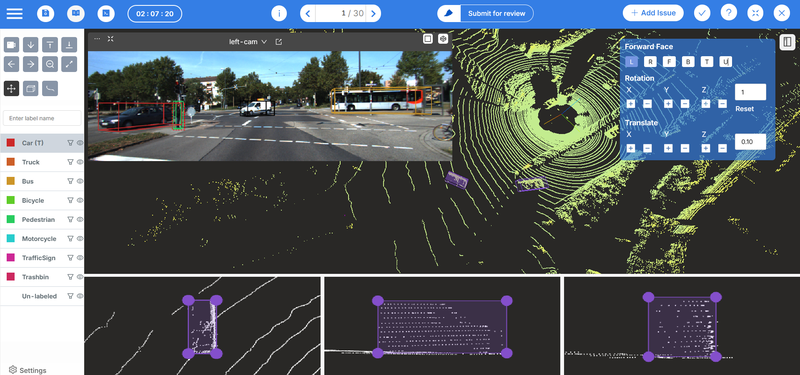
Best for: Teams that are looking for reliable multi-sensor fusion, efficient LiDAR annotation, and an easy to use interface.
Mindkosh is built specifically for multi-sensor AV, robotics and industrial automation pipelines. It focuses on native LiDAR tools, camera-Lidar synchronization, support for other sensors like thermal and depth cameras and automation tailored for 3D workflows.
Key Features:
- Extensive support for Lidar Point clouds - 3D cuboids, panoptic segmentation and polylines.
- Multi-sensor fusion with 3D→2D projection, consistent IDs across time and sensors.
- Native support for single channel images like Depth and Thermal and ability to add multiple contextual images to an image.
- Automation - 1-click cuboid annotation, Interactive Image Segmentation and Mask propagation for sequential images.
- Multi-annotator consensus, Honeypot QA, and a complete issue management system.
- Multi-vendor management with isolation between teams.
Limitations:
- No support for non-vision modalities (e.g., text/audio)
- Best suited for AV/robotics rather than general-purpose labeling.
You can learn more about whatMindkosh offers for labeling for the Autonomous vehicles/ Industrial automation industry here.
Labelbox – Data-centric annotation & evaluation
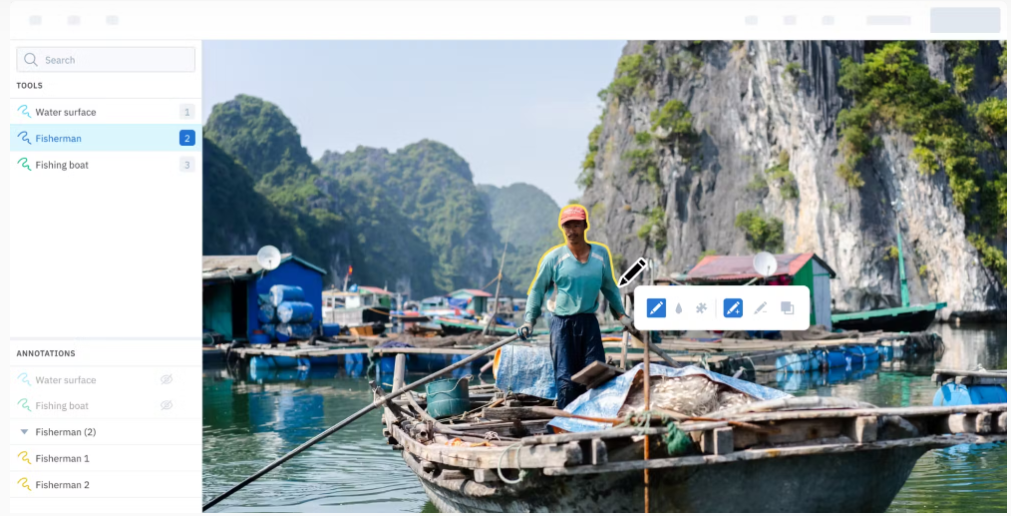
Best for: Teams prioritizing data quality + model evaluation
Labelbox positions itself as a data factory, combining annotation with model evaluation and quality assurance. It offers a broad set of editors - image, video, audio, PDFs, Geospatial, multimodal chat - and a set of foundational models to help pre-label data.
Key Features:
- Robust and reliable infrastructure.
- Advanced model evaluation & debugging tools.
- Customizable multi-step workflows with no-code setup.
- Supports Audio and GenAI labeling tasks.
Limitations:
- No support for LiDAR, sensor fusion or multi-modal data.
- While foundation models can help with pre-labeling, Labelbox lacks automation tools for AV/Industrial automation use cases like Interactive segmentation (like SAM).
Encord – Medical imaging & video-centric annotation
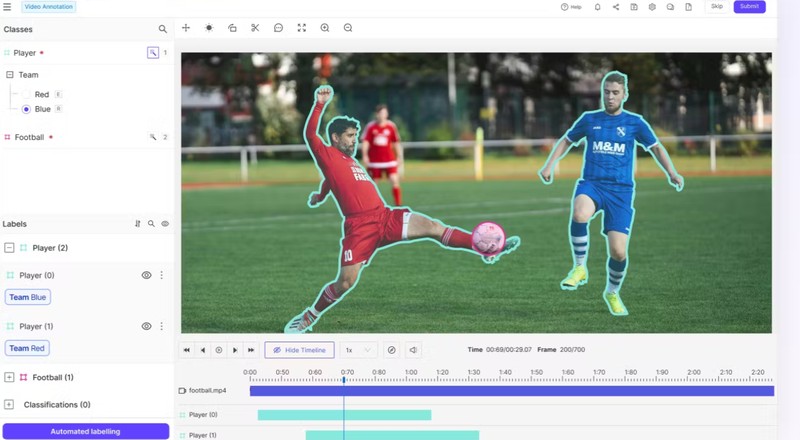
Best for: Teams focused on medical imaging, video segmentation, or research-heavy projects
Encord is known for its strength in 2D annotation, particularly in medical imaging and video workflows. It offers collaborative features, customizable ontologies, and automation support — making it ideal for research-heavy or early-stage teams.
Key Features:
- Strong video annotation and segmentation tooling.
- Native support for medical imaging formats (e.g., DICOM)
- Customizable ontologies for domain-specific workflows
- Automatic annotation tools + collaborative review system
Limitations:
- Limited native LiDAR/point cloud capabilities (In beta as of writing this blog).
- Best suited for 2D and video-based projects rather than AV-scale 3D pipelines.
- More tailored for research/medical domains than robotics or AV.
Segments.ai – 3D-first tooling for sequential LiDAR + camera datasets
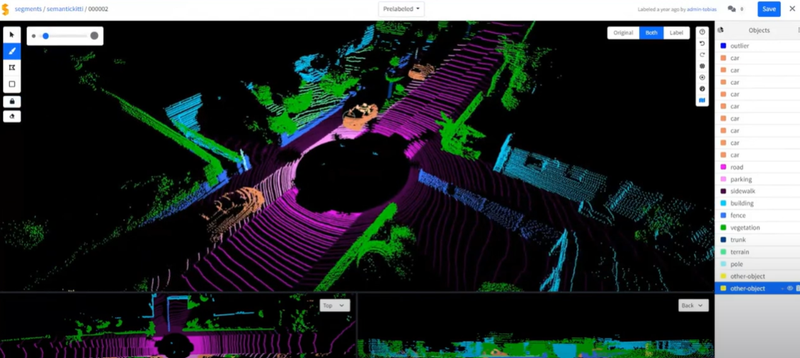
Best for: Internal ML teams labeling sequential LiDAR + camera data who want fast workflows and SDK integrations
Segments.ai is designed with robotics and AV workflows in mind. It handles sequential 3D datasets, maintains consistent IDs across frames, and streamlines cuboid-based workflows.
Note: Segments.ai was recently acquired by Uber Data Solutions, casting doubts over its long-term roadmaps and focus areas.
Key Features:
- LiDAR + synchronized camera labeling
- 3D→2D projection and fused 2D/3D viewport
- Automatic interpolation and object tracking
- Strong Python SDK + webhooks for active-learning loops
Limitations:
- Acquisition by Uber Data Solutions raises doubts over the long-term future.
- Weaker image-labeling toolkit compared to 3D features.
- Limited support for LiDAR segmentation and video annotation.
- Long-term commitments are required for flexible subscriptions.
CVAT – Open-source, flexible, engineering-first
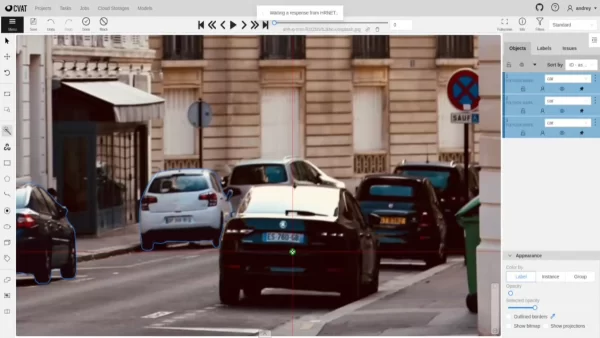
Best for: Organizations that dont need to label small volumes of data, need full control or want to build custom annotation flows on an open platform
CVAT is the leading open-source annotation tool, suitable for research labs and engineering-heavy teams. It offers full flexibility but requires engineering resources to scale and customize. While CVAT is a very strong image annotation platform, specially for small teams (<5-10 people), its support for Lidar annotation is very limited.
Key Features:
- Strong for 2D image/video annotation
- Limited support for Lidar point clouds - basic cuboid annotation.
- Full API/CLI control with Docker self-hosting
- Active open-source community with frequent extensions
Limitations:
- POint cloud annotation features are very limited with no support for lidar-camera synchronization, point cloud segmentation or polyline labeling.
- Requires engineering resources for scaling and customization.
- Limited out-of-the-box automation and QA workflows.
How to choose?
- You need native multi-sensor fusion, multi-camera support and easy to learn workflows → Mindkosh
- You want human-in-the-loop workforce + model evaluation → Labelbox
- You want collaboration-first 2D workflows → SuperAnnotate
- You want medical imaging/video-centric workflows → Encord
- You want fully custom, open-source, self-hosted → CVAT
Final thoughts
SuperAnnotate is an excellent collaboration-first tool — but it isn’t a one-size-fits-all platform for sensor-fusion, LiDAR segmentation, or large-scale AV/robotics datasets. Picking the right alternative depends on your sensor mix, scale, and the amount of engineering/operational support you want to own.
If your team is building perception stacks that require true multi-sensor context, native 3D tooling, and automation-first workflows, Mindkosh is purpose-built for that workload. Want to see it in action? Sign for free today, or just let us know - we'd be happy to setup sample datasets for you to play around with the platform!
